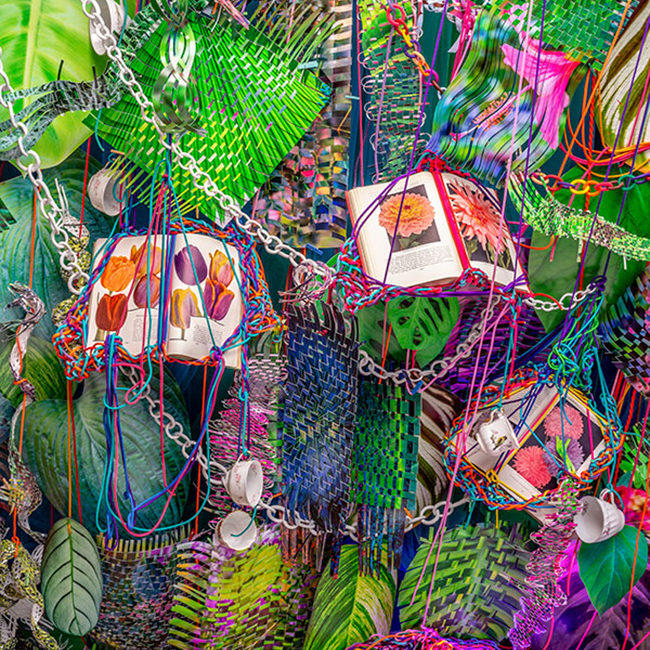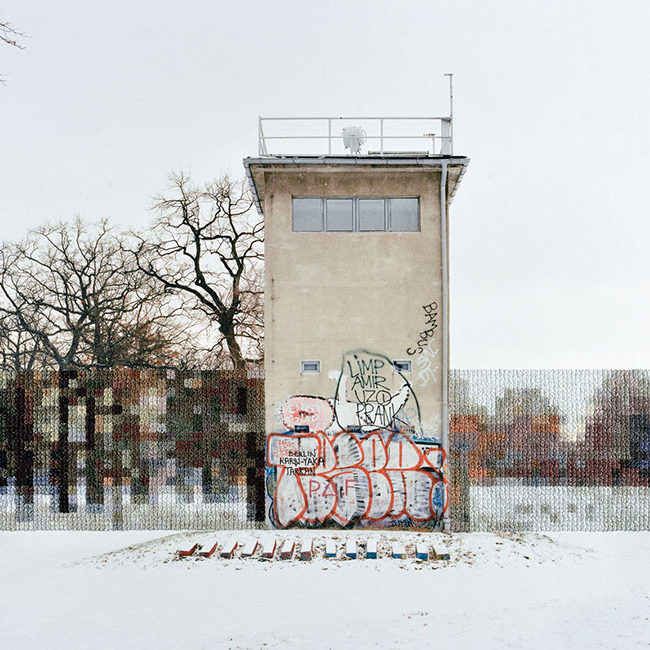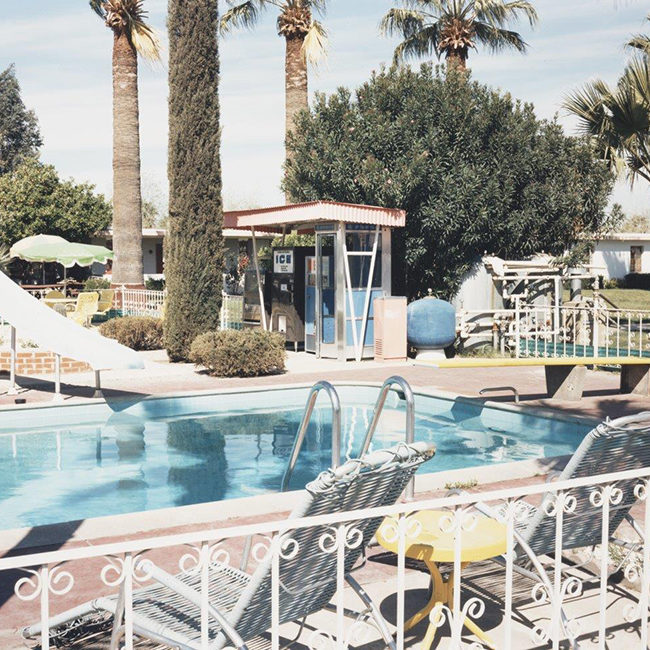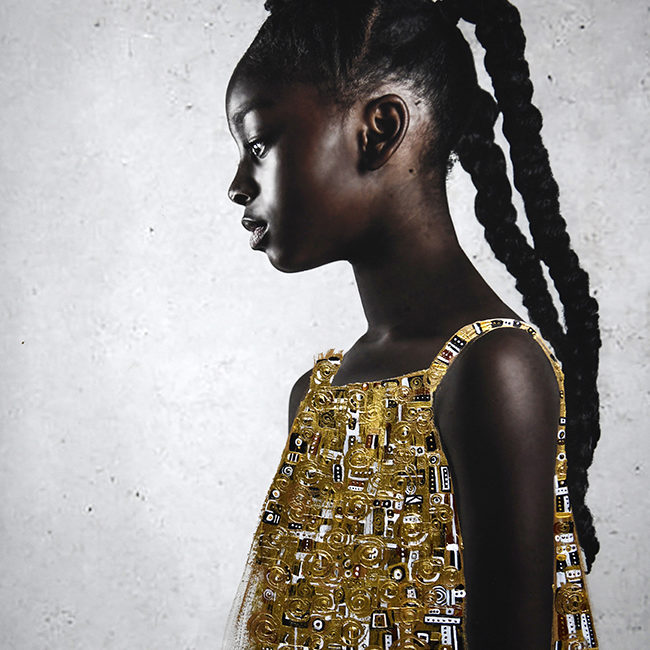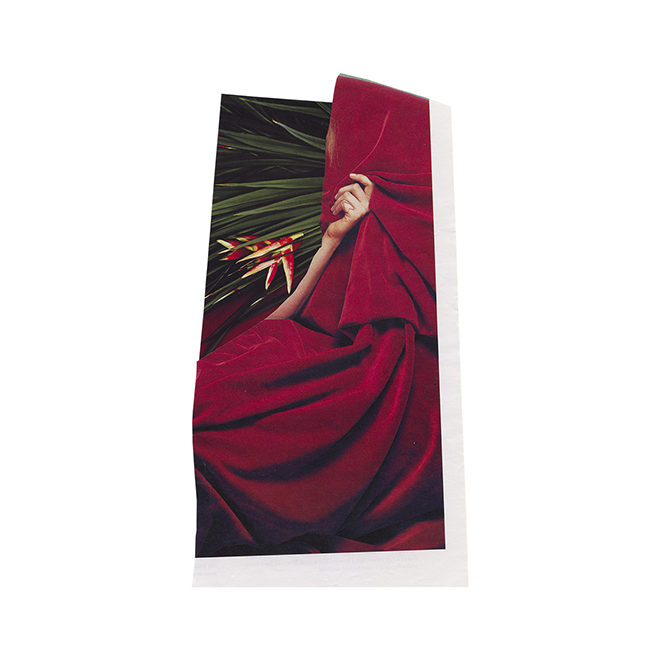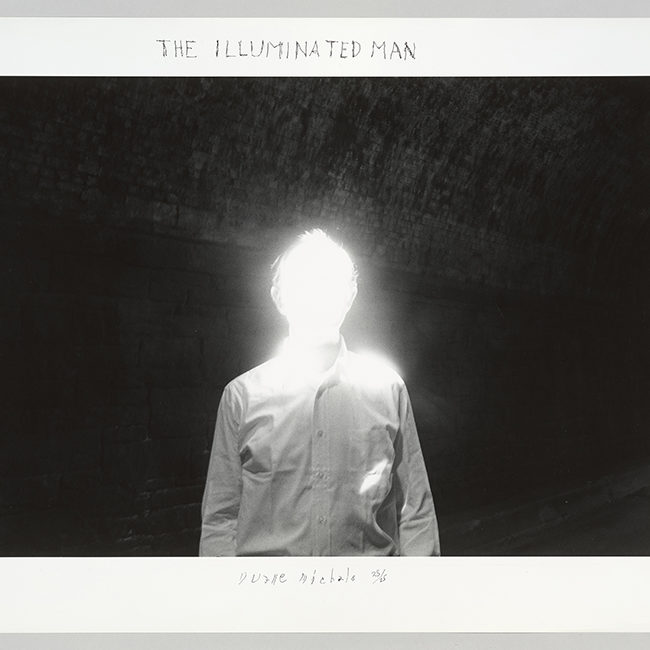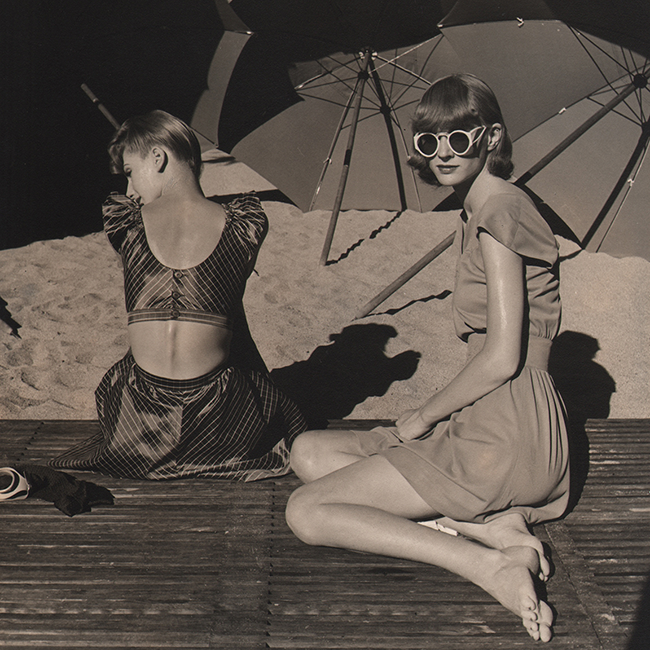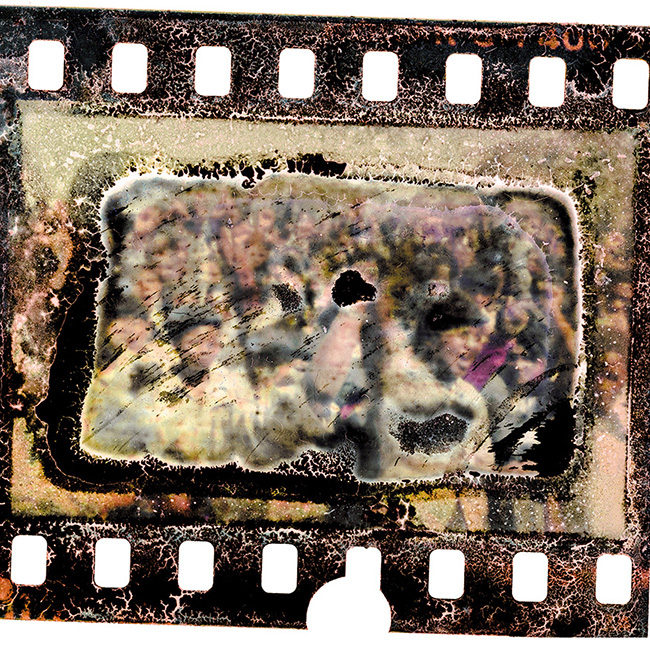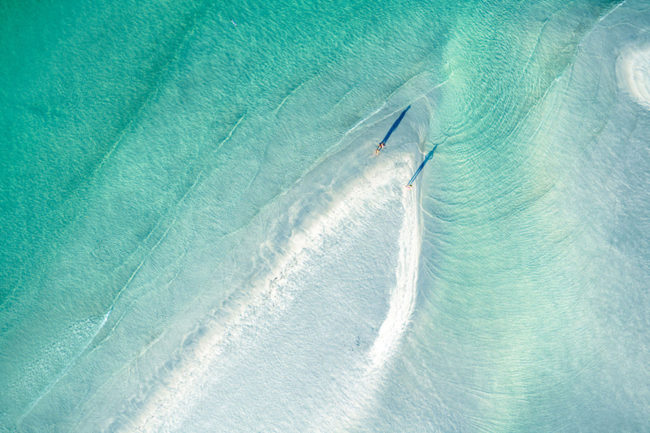Masahisa Fukase received considerable attention during his lifetime for his obsessive photographs of his wife, and for books such as Karasu (Ravens), which was voted the best photo book of the past 25 years in 2010. Since his death in 2012, twenty years after a fall left him in a coma, his renown has continued to grow. His images are included in Tate Modern’s show “Performing for the Camera,” which runs until June 12, and last month, MACK published Hibi, a collection of black-and-white street photographs, made between 1990 and 1992 and rediscovered after Fukase’s death. In the images, Fukase records the surfaces of Japanese streets, focusing on signs painted on the ground, cracking asphalt and dripping water—all well-worn by time. Over these bromide prints, he painted lively, bright markings in patterns that sometimes echo the concrete. The prints were shown in Tokyo in 1992, but, writes the publisher in a statement, “the box of prints lay hidden in his archive for over a decade.” Where the images in Karasu (which was republished in the U.S. as The Solitude of Ravens), are unrelentingly bleak, Fukase’s work had gotten a little brighter in the years preceding his accident. “Bukubuku,” which was exhibited in the same 1992 show (and published as a book in 2004), is a series of sometimes humorous studies Fukase made of his face underwater in the bathtub. Hibi, which means “days,” continues that trajectory, turning the drab street into something more vivid.
Related Stories:
‘Girl Photographers’ Reclaimed
Experimental Japan
Japanese Legend Akira Sato’s Prints Resurface
